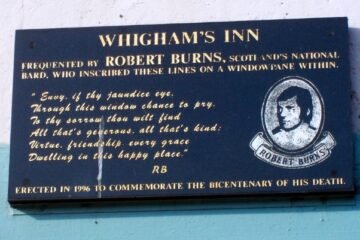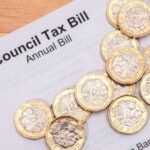Edinburgh is pulling in record-breaking tourist numbers — but at what cost? Some fear the capital is losing its soul as magic merchandise and photo ops replace real city life.
Just six months after being named the most expensive city break in Western Europe, Edinburgh is again under the spotlight. International tourism is booming, yes — but city leaders are asking a sharp-edged question: do we want Edinburgh to turn into a Harry Potter theme park?
A City That’s Too Popular for Its Own Good?
There’s no question that people love Edinburgh. And it’s not just the Brits or the occasional European weekenders. International visitor numbers surged to 2.3 million in 2023, up from 1.8 million the year before. That’s a 27% jump in just 12 months.
But while tourists are busy snapping selfies on Victoria Street — said to be the inspiration for Diagon Alley — locals are feeling squeezed. The price of everything, from rent to your morning coffee, keeps creeping up.
Council Leader Jane Meagher summed up the sentiment in a recent meeting. “We need to ask ourselves who this city is for,” she said. “Is it for the people who live here, or just the people who visit?”

Wands, Waffles and Wandering Crowds
Walk around the Old Town and you’ll see what she means. Shops sell broomsticks. Cafés offer “Butterbeer” lattes. Even the walking tours are themed — ghost stories, wizarding world trivia, Outlander re-enactments.
It’s fun, sure. But for some, it’s starting to feel like the real Edinburgh is slipping away.
“You used to have bookshops, antique stores, old tailors,” says Marjorie, a lifelong resident of the Southside. “Now it’s just wand shops and waffle cones.”
The cobbled charm of the city remains — but the businesses are changing fast. According to a 2024 survey by the Edinburgh World Heritage Trust:
-
38% of independent retailers in the Old Town have closed since 2019
-
57% of new leases went to tourist-focused chains or themed shops
-
Only 12% of storefronts now cater primarily to local residents
A Harry Potter Economy
Of course, Harry Potter brings in big bucks. The franchise has become a kind of unofficial branding for the city. Even though JK Rowling wrote most of the books in local cafés, the city itself barely features in the novels. Still, tourists make pilgrimages to The Elephant House café, Greyfriars Kirkyard, and that winding little street behind the Grassmarket.
Tour operators, souvenir sellers, even Airbnb hosts — all have cashed in.
And the numbers are staggering:
| Year | International Visitors | Estimated Visitor Spend | Top Tourist Reference |
|---|---|---|---|
| 2019 | 1.9 million | £1.2 billion | Festivals |
| 2022 | 1.8 million | £1.5 billion | Castles & Whisky |
| 2023 | 2.3 million | £2.1 billion | Harry Potter |
That’s right — in 2023, Harry Potter-themed tours and products accounted for an estimated 32% of all visitor-related commercial activity in the city centre.
But when does smart branding become overkill?
Locals Say “We’re Not Disneyland”
It’s not just about economics — it’s emotional, too. The sense of community is getting diluted.
In Leith, in Morningside, in Tollcross — people say their neighbourhoods are changing. Not because of anything specific, but because of everything changing all at once.
Tiny grocery shops replaced by candle stores. Cafés switching to “themed” menus. Buses overloaded with tourists trying to get to Calton Hill or Arthur’s Seat.
“It feels like we’re performing Edinburgh,” says Aliya, a university student living near the Meadows. “Like we’re extras in someone else’s story.”
One-liner from a pensioner in Gorgie: “I liked it better when the tourists ignored us.”
The Council’s Not Staying Quiet Anymore
Back at City Chambers, officials are trying to find a way forward. Jane Meagher’s comments weren’t just off-the-cuff; they signal a deeper rethink of Edinburgh’s tourism model.
The city is considering:
-
Introducing stricter controls on themed retail outlets in heritage areas
-
Capping short-term lets and Airbnbs in Old Town and Southside
-
Launching a “Living Edinburgh” fund to support businesses that cater to residents
-
Expanding the tourist tax pilot to fund local infrastructure improvements
One council source said bluntly, “We’ve let the Potterisation of the city go unchecked for too long. It’s not anti-tourist. It’s about balance.”
But the Magic Isn’t All Bad, Is It?
Still, not everyone’s against it. Some argue that the Harry Potter wave has kept the city’s economy afloat through tough years — from COVID to the cost-of-living crisis.
“Let’s not throw the baby out with the bathwater,” says hotelier Damian Craig, who runs a boutique stay near the Royal Mile. “These visitors bring in revenue. They support jobs. And a lot of them come back for the history, the arts, the Fringe — not just for broomsticks.”
He’s got a point. VisitScotland’s 2024 data shows that more than 70% of repeat visitors come for cultural reasons, not pop culture. But the first visit? Often, it’s sparked by a movie scene or a Potter book.
So maybe the city is a gateway drug to deeper appreciation. Maybe themed tourism can sit alongside real heritage, instead of erasing it.
Still Ours, or Just Rented Out?
It’s a question of identity. Cities evolve — they always have. But some feel Edinburgh is changing too fast, and not in ways that benefit the people who live here year-round.
As Meagher put it: “We’re at a fork in the road. We can be a postcard, or we can be a city. But I’m not sure we can be both.”

















